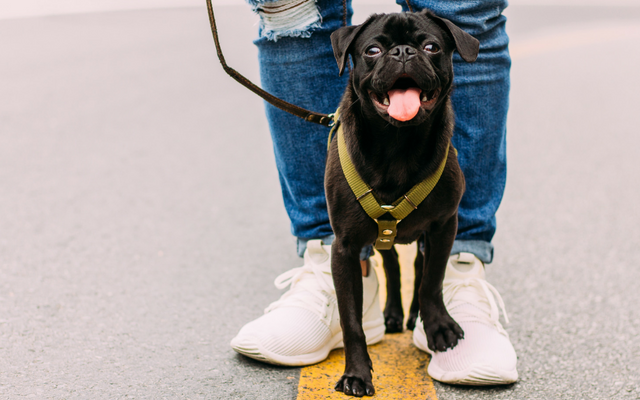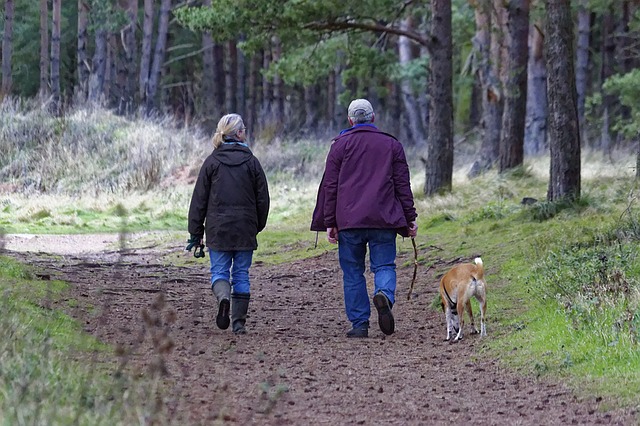Throughout the COVID-19 pandemic, the CDC has recommended exercising caution when it comes to exposing domestic cats and dogs to known infected humans. There have been conflicting reports on how the virus may or may not be transmitted from humans to animals and vice versa. We all want to keep our pets safe so what is the right course of action? The CDC is now recommending that pets practice social distancing just the same way that their humans do.

Starting Now, Practice Social Distancing with Pets
We all have a pretty good idea of what social distancing looks like between humans at this point. When you go to the grocery store, there are X’s on the floor to keep you six feet away from your fellow shopper at the deli counter. When you go to the post office, there are signs hanging six feet apart marking the distance you should keep from the person in front of you. Until now, though, most of us have felt okay letting our dogs continue to rub noses or take a sniff of one another in greeting. Not anymore. When you are out and about with your dog, you should keep them safely distant from those outside of your family.

Go Outdoors with Your Dog, But Do it at a Distance
Dr. Catherine Barnette, DVM recently wrote on the VCA Hospital website that outdoor exercise still has benefits that outweigh the known risks. She said, “Fresh air and exercise will likely alleviate some of the stress and anxiety that you may be feeling while giving your dog some fun and exercise.” That being said, you should get this fresh air and exercise with your dog at a distance. Don’t let your dog approach others, avoid off-leash dog parks, and give fellow humans and their dogs six feet of space when passing.

The Official CDC Guidelines on Social Distancing
The CDC website shows the following guidelines that sound very similar to the human social distancing guidelines. We are all very familiar with how to keep ourselves “socially distant.” Now, the CDC says you should do the same with your pets.
The CDC.gov website says, “Until we learn more about how this virus affects animals, treat pets as you would other human family members to protect them from a possible infection.
- Do not let pets interact with people or other animals outside the household.
- Keep cats indoors when possible to prevent them from interacting with other animals or people.
- Walk dogs on a leash, maintaining at least 6 feet (2 meters) from other people and animals.
- Avoid dog parks or public places where a large number of people and dogs gather.”

The Official CDC Guidelines on Protecting Pets from Infected People
We now know that infected humans can, in fact, spread the human COVID-19 virus to animals. We still do not understand how the virus affects them, if at all. Due to that uncertainty, the CDC recommends that infected humans limit interactions with companion animals. The CDC.gov website says:
“If you are sick with COVID-19 (either suspected or confirmed by a test), you should restrict contact with your pets and other animals, just like you would with people. Until we know more about this virus, people sick with COVID-19 should avoid contact with pets and other animals.
- When possible, have another member of your household care for your pets while you are sick.
- Avoid contact with your pet including, petting, snuggling, being kissed or licked, and sharing food or bedding.
- If you must care for your pet or be around animals while you are sick, wear a cloth face covering and wash your hands before and after you interact with them.
If you are sick with COVID-19 and your pet becomes sick, do not take your pet to the veterinary clinic yourself. Call your veterinarian and let them know you have been sick with COVID-19. Some veterinarians may offer telemedicine consultations or other plans for seeing sick pets. Your veterinarian can evaluate your pet and determine the next steps for your pet’s treatment and care.”
This crisis is teaching us all how to be flexible and adaptable for the well being of everyone around us. This now extends to our pets. Until we fully understand what can happen to dogs and other pets if infected with COVDI-19, let’s do our part to protect those precious fur babies.
 Toledo, United States.
Toledo, United States.